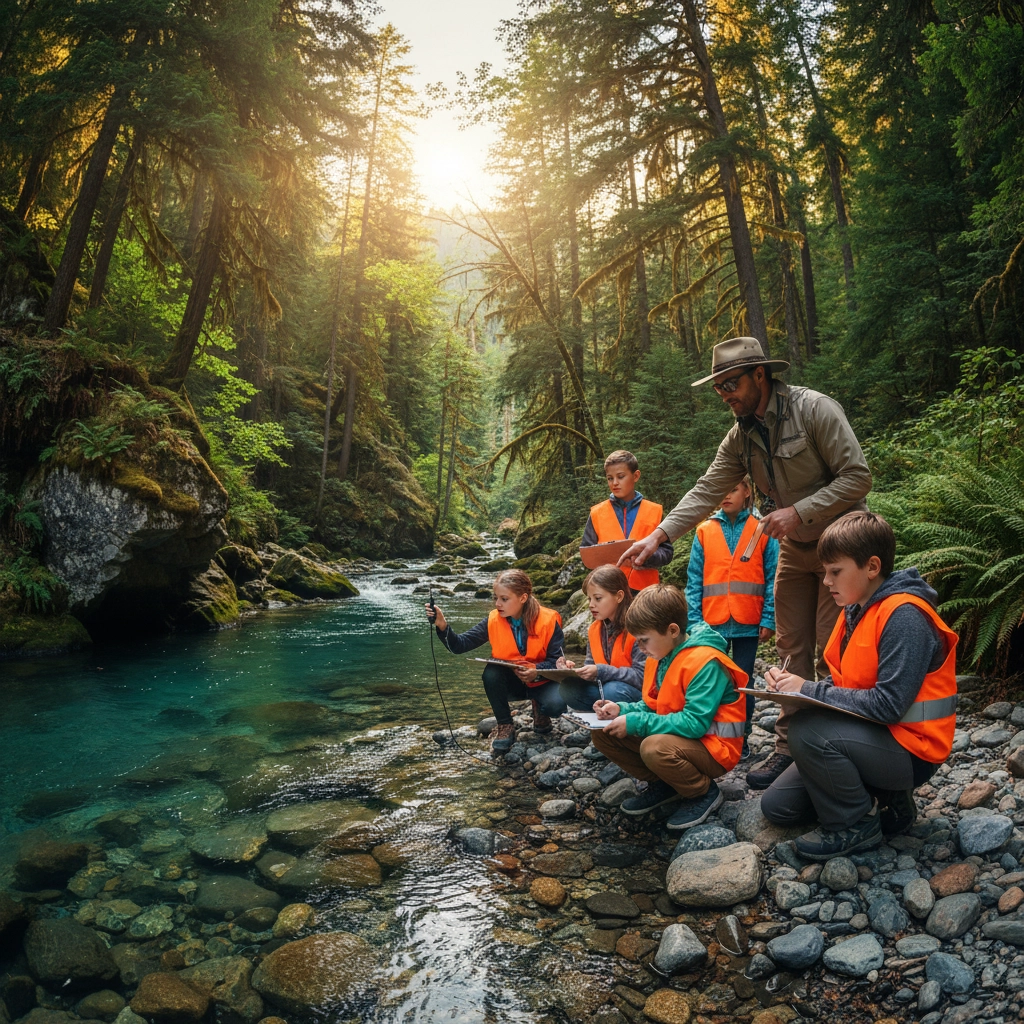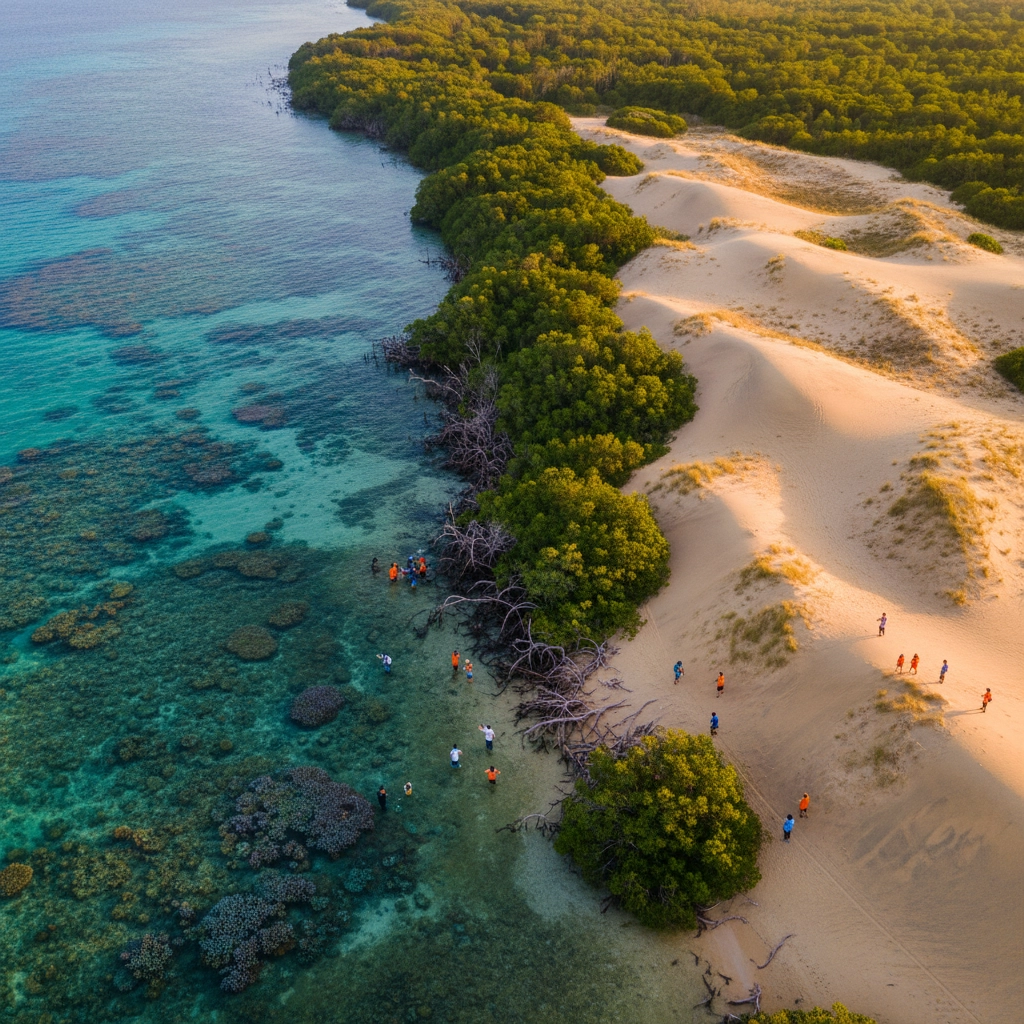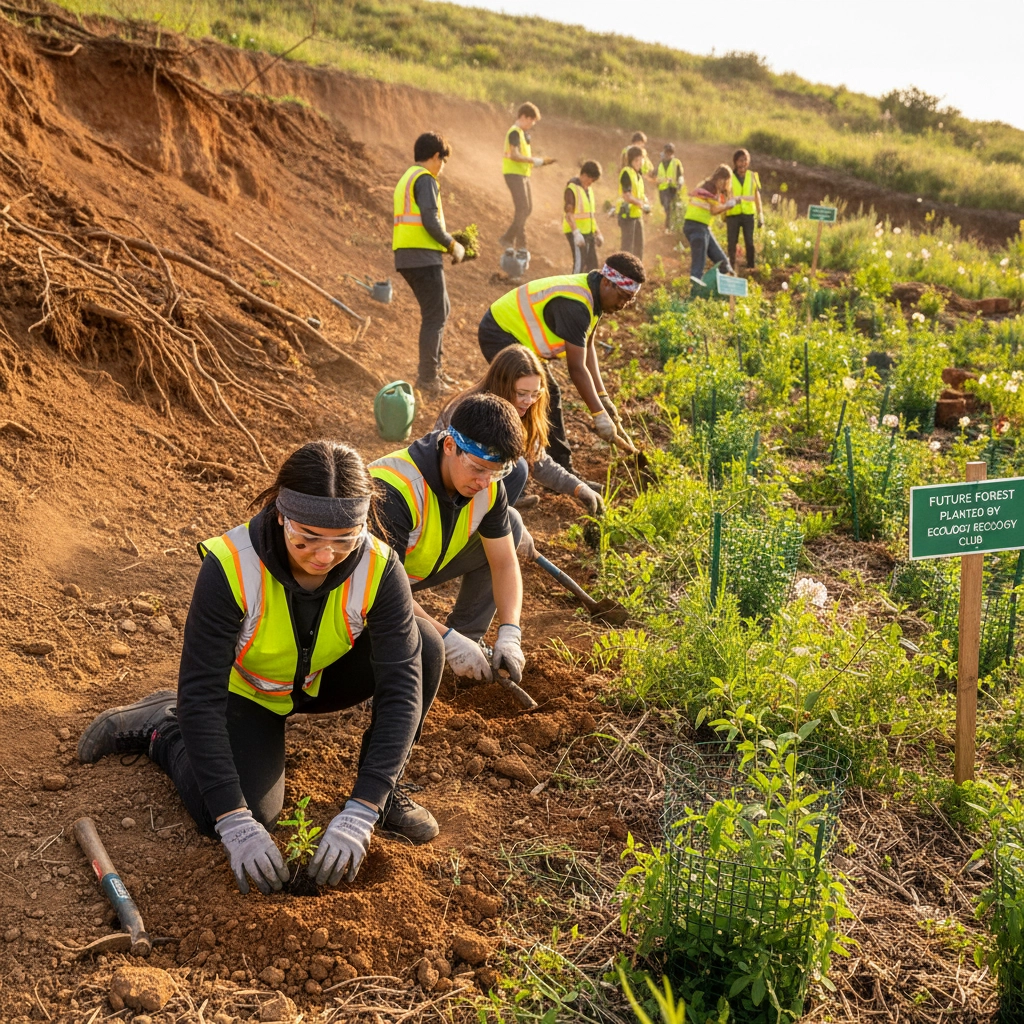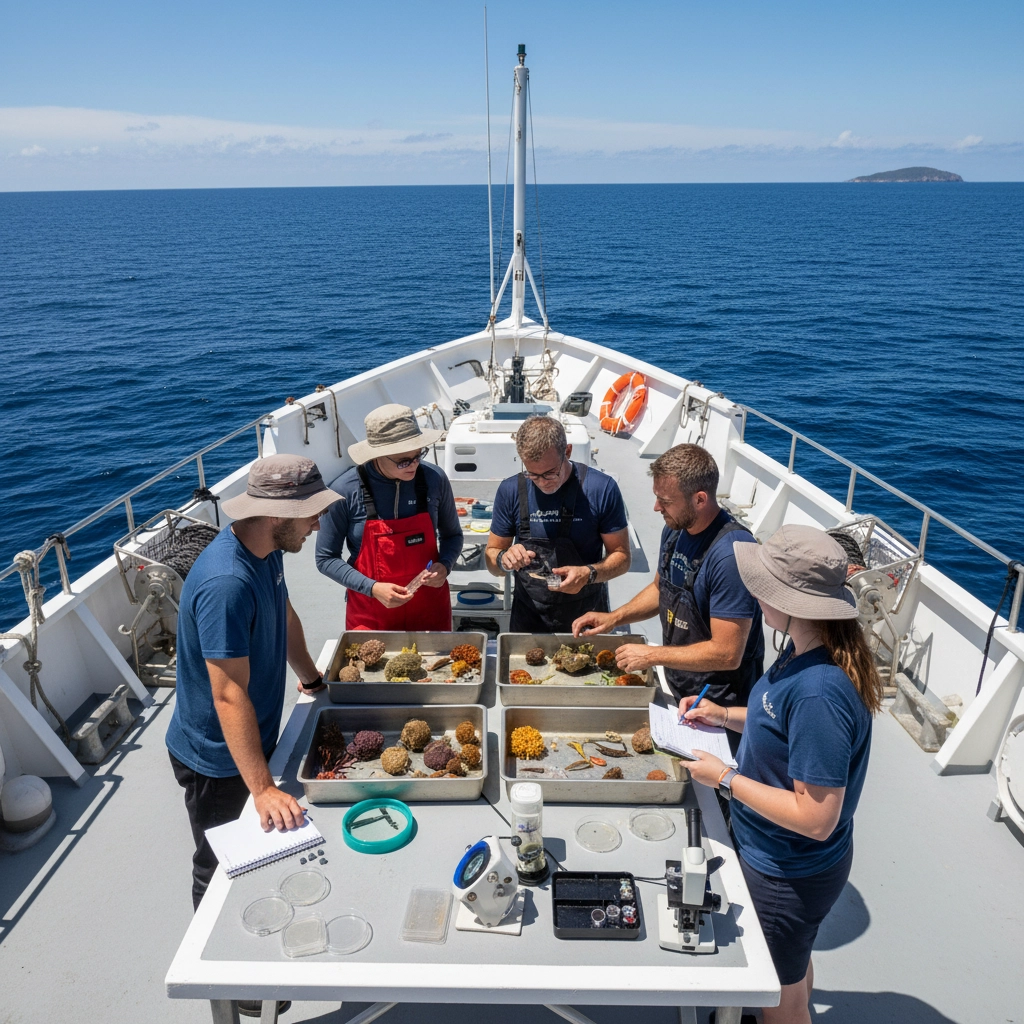The Teacher's Guide to Hands-On Learning Trips That Actually Inspire Students to Become Conservation Champions
- Caleb Mullenix
- 6 days ago
- 6 min read
Updated: 2 days ago
Ensuring that students develop genuine environmental stewardship requires more than classroom discussions about conservation: it demands immersive, hands-on experiences that forge lasting connections between young learners and the natural world. Research consistently demonstrates that students who participate in direct outdoor experiences during their formative years develop stronger environmental values and are more likely to pursue conservation-related careers throughout their lives.
Preparing your students to become tomorrow's conservation champions involves careful planning of educational experiences that combine scientific inquiry, environmental awareness, and meaningful action. The most effective conservation-focused field trips transform students from passive observers into active participants who understand their role in protecting Earth's ecosystems.
Establishing Clear Conservation Learning Objectives
Begin by identifying specific conservation concepts you want students to understand through direct experience. Effective conservation education trips should address interconnected themes including biodiversity preservation, habitat restoration, climate change mitigation, and sustainable resource management. Create measurable learning outcomes that extend beyond simple species identification to include understanding ecological relationships, human environmental impact, and actionable conservation strategies.
Design your trip objectives around hands-on scientific methods that mirror real conservation work. Students should engage in data collection, habitat assessment, species monitoring, and restoration activities that contribute to actual conservation efforts. This approach ensures that learning experiences feel meaningful and impactful rather than artificial or purely academic.

Collaborate with conservation organizations and research institutions to align your trip objectives with ongoing scientific projects. Many marine sanctuaries, national parks, and wildlife refuges welcome student groups who can contribute to citizen science initiatives while gaining authentic conservation experience. This partnership approach maximizes both educational value and real-world conservation impact.
Selecting Destinations That Maximize Conservation Impact
Choose field trip destinations that offer diverse ecosystems and documented conservation success stories. Prioritize locations where students can observe conservation efforts in action, interact with professional conservationists, and participate in ongoing habitat restoration or species protection projects. National marine sanctuaries, wildlife rehabilitation centers, and active research stations provide ideal settings for conservation-focused learning.
Research the specific conservation challenges facing your chosen destination before the trip begins. Prepare students to understand local environmental issues, ongoing conservation efforts, and how their visit contributes to broader protection goals. This preparation transforms sightseeing into purposeful scientific investigation and conservation action.
Consider destinations that showcase different conservation approaches and success stories. Students benefit from seeing variety in conservation strategies, from community-based initiatives to large-scale government programs. This exposure helps them understand that conservation requires diverse approaches and offers multiple career pathways for future environmental leaders.
Implementing Hands-On Conservation Activities
Structure trip activities around authentic conservation tasks that produce measurable results. Organize students into research teams that conduct habitat assessments, species counts, water quality testing, or invasive species removal. Provide proper scientific equipment and data collection sheets so students experience genuine field research methodology.
Establish partnerships with local conservation organizations who can guide students through professional-level activities. Many marine research stations offer programs where students assist with coral reef monitoring, sea turtle tracking, or marine debris assessment. These partnerships provide students with mentorship from working conservationists while contributing valuable data to ongoing research projects.

Create opportunities for students to engage in habitat restoration work during their field experience. Tree planting, native species gardening, trail maintenance, and erosion control projects allow students to see immediate positive impact from their efforts. Document these activities with before-and-after photography so students can visualize their conservation contributions.
Incorporate technology-based conservation tools that students can continue using after the trip ends. Teach students to use wildlife tracking apps, water quality monitoring equipment, or GPS mapping tools that support ongoing citizen science projects. This technological integration extends conservation learning beyond the field trip timeframe.
Ensuring Safety During Conservation Activities
Emphasize comprehensive safety planning when organizing conservation-focused field trips, as these experiences often involve outdoor work environments and scientific equipment. Conduct thorough risk assessments for all planned activities, including weather contingencies, equipment safety protocols, and emergency evacuation procedures for remote research locations.
Require proper safety equipment for all conservation activities, including appropriate footwear, protective clothing, and safety gear specific to planned research tasks. Establish clear protocols for tool use, wildlife encounter procedures, and group supervision during hands-on conservation work. Create written safety guidelines that address both general outdoor risks and activity-specific hazards.
Train adult chaperones and student leaders in basic first aid and emergency response procedures before departure. Ensure that multiple adults understand trip itineraries, emergency contact information, and evacuation routes for all planned conservation work sites. Maintain communication equipment that functions in remote research locations where conservation activities commonly occur.
Building Partnerships with Conservation Organizations
Connect with established conservation organizations that offer structured educational programs aligned with your learning objectives. Organizations such as marine sanctuaries, wildlife research centers, and environmental education nonprofits provide curriculum-connected experiences that combine scientific rigor with hands-on conservation work.

Research available grants and funding opportunities specifically designed to support conservation education field trips. Many conservation organizations offer transportation grants, program scholarships, or equipment lending programs that reduce financial barriers to meaningful outdoor experiences. Apply for these opportunities well in advance of planned trip dates to secure necessary funding.
Establish ongoing relationships with conservation partners that extend beyond single field trip experiences. Seek organizations that offer classroom visits, virtual programming, or student internship opportunities that maintain conservation connections throughout the academic year. These partnerships create continuity that reinforces field trip learning and provides pathways for continued conservation engagement.
Developing Student Leadership and Action Projects
Encourage students to identify specific conservation challenges they observed during the field experience and develop action projects addressing these issues. Guide students through project planning processes that include research, goal setting, implementation strategies, and impact measurement. This approach transforms field trip observations into ongoing conservation leadership opportunities.
Create presentation opportunities where students can share their conservation experiences and action projects with broader school and community audiences. Organize conservation fairs, community presentations, or social media campaigns that allow students to educate others about their field experiences and inspire additional conservation action.
Connect student conservation projects with school curriculum across multiple subject areas. Integrate conservation action projects into English classes through persuasive writing assignments, mathematics classes through data analysis activities, and social studies classes through community action research. This cross-curricular approach reinforces conservation learning while demonstrating real-world application of academic skills.
Measuring Long-Term Conservation Impact
Implement follow-up assessments that measure student conservation knowledge, attitudes, and behaviors several months after the field experience. Use surveys, interviews, or portfolio assessments to document lasting changes in environmental awareness and conservation commitment. This data helps demonstrate program effectiveness and guides future trip planning improvements.
Track student participation in ongoing conservation activities following the field experience. Monitor involvement in school environmental clubs, community conservation projects, or citizen science initiatives that indicate sustained conservation engagement. Document student leadership in conservation-related activities as evidence of program impact on future conservation champions.

For educators seeking to provide transformative conservation experiences that inspire lifelong environmental stewardship, organizations like Appleseed Expeditions offer expertly designed educational programs that combine hands-on conservation work with rigorous scientific learning. Their marine science expeditions provide students with authentic research experiences alongside professional conservationists, creating the foundation for future conservation leadership.
Sustaining Conservation Engagement Beyond the Trip
Establish classroom connections that maintain conservation focus throughout the academic year following field experiences. Create conservation learning centers, maintain trip photo displays, or establish school conservation projects that remind students of their field experience commitments. These ongoing reminders help sustain initial conservation enthusiasm generated during hands-on field work.
Encourage students to pursue additional conservation learning opportunities through summer programs, volunteer experiences, or advanced coursework related to environmental science and conservation. Provide information about conservation career pathways, college programs, and professional development opportunities that align with student interests developed during field experiences.
Create alumni networks that connect past trip participants with current conservation education programs. Invite former students who pursued conservation careers to speak about their experiences and mentor current participants. These connections demonstrate long-term career possibilities while providing ongoing inspiration for conservation commitment.
The most successful conservation education field trips create lasting transformation in student environmental values and career aspirations. Through careful planning, meaningful partnerships, and authentic hands-on experiences, educators can inspire the next generation of conservation champions who will protect our planet's precious ecosystems for decades to come. Begin planning your conservation-focused field experience today, and prepare to witness the powerful impact of hands-on learning on student environmental stewardship.



Comments